GROUP RESIDENCY / THE MOVING IDEA
The Moving Idea
Residencia de investigación, experimentación y cocreación
How do ideas move? Can an idea be transmitted through art? Can an aesthetic experience be the starting point for the creation of a new idea?
These and many other questions about cultural exchange, the importance of imagination, as well as interaction with spaces and people that are alien to us, were the inspiration for the residency. Once again, a group of creators – from diverse disciplines including painting, architecture, photography, philosophy, sculpture and performance art - met on Ibiza in a spirit of artistic endeavour, cultural exchange and conviviality. The results of the residency were presented publicly at an event at the finca, and much of the work was re-presented in the 2022 exhibition Preludio, held in La Carpinteria.
La Juan Gallery
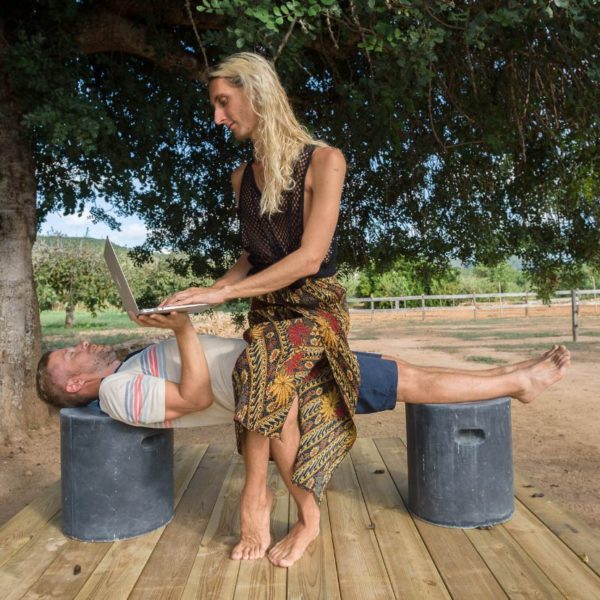
Bio
La Juan Gallery is a temple of live art, founded in 2015 by Juan Gómez Alemán and Alex Delacroix under the firm belief that performance art is a transversal discipline and that artists inherently create with their bodies.
Juan Gómez Alemán is the creative director of La Juan Gallery. He is also a freelance cultural manager, exhibition curator, playwright and stage director, driven by a deep curiosity for life and self-education.
Alex Delacroix is the Transavantgarde personified: audiovisual artist, filmmaker, actress, comedian, co-director of La Juan Gallery, gender fluid activist, occasional model and generational icon.
Project:
Marc Tur & Eduard Reguant
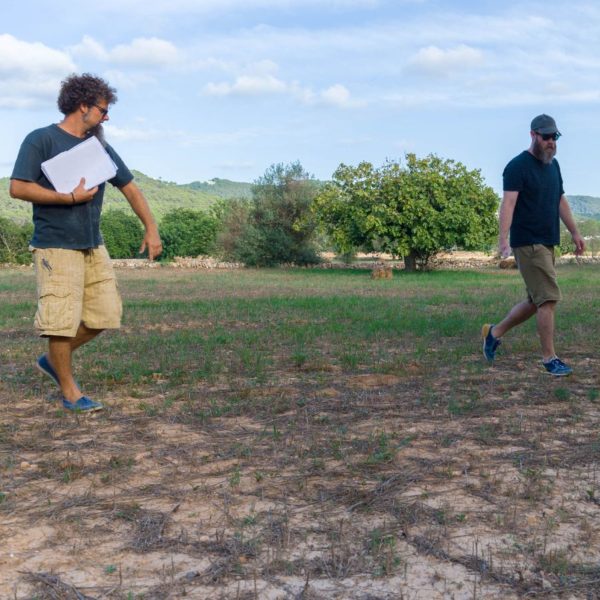
Bio
The Ibizan Marc Tur and the Catalan Eduard Reguant are two architects based in Ibiza. For Marc Tur, ‘a good project is one that allows us to correct or positively influence the way people relate to each other’, words that illustrate the value he gives to architecture in general and his daily work in particular. Winner of the 2008-2011 Ibiza and Formentera architecture prize, he is, together with Eduard Reguant, responsible for the design of the Ses12naus spaces in Ibiza.
Project:
Ana Martínez Fernández
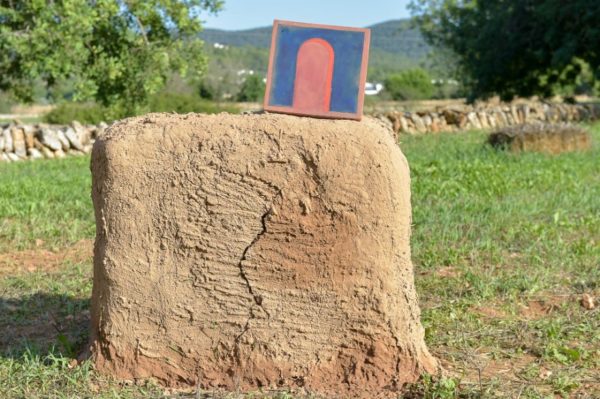
Bio
Ana Martínez Fernández works mainly in the field of sculpture which she approaches through written and spoken language. She is interested in the complexity of social narratives, especially the implications of the consumption of certain products and images, the paradoxical or contradictory forces shaping the mechanisms of desire, and the absence – or presence – of innocence in these mechanisms.
She studied Fine Arts at the Universidad del País Vasco and Contemporary Art Theory at Goldsmiths University College London. She has taught Criticism and Contextual Studies at the Faculty of Architecture at London Metropolitan University and has exhibited in Madrid, Osaka, Madrid and France.
Project:
Santiago Ydáñez

Bio
A Fine Arts graduate from the University of Granada, Ydáñez has given workshops along with Juán Genovés and Mitsuo Miura, among others. He has received important distinctions and is one of Spain’s most internationally renowned painters. He has been awarded scholarships by the Ministry of Culture’s Colegio de España in Paris (2001), the Marcelino Botín Foundation (1998), the Academia de España in Rome (2016) and the 33rd BMW Painting Prize (2018).
He has held exhibitions at the CAC (Málaga), Villa di Livia (Rome), Whitebox Art Center (Beijing), Museo Lázaro Galdiano (Madrid), Dillon Gallery (New York), CAAM (Gran Canaria), Invaliden1 (Berlin), Fundación Chirivella Soriano (Valencia), Künstlerhaus Bethanien (Berlin), Antigua Iglesia de la Compañía de Jesús (Caravaca de la Cruz, Murcia), Gallery SE (Bergen, Norway), Goethe Institut, Instituto Cervantes (Stockholm), Fundación Canaria para el Desarrollo de la Pintura (Las Palmas de Gran Canaria), GE Galería (Monterrey, Mexico), among others. His work is present in the collections of the Fundación Botín (Santander), Museo Nacional Centro de Arte Reina Sofía (Madrid), DKV, CAC (Málaga), Museo Sofía Ímber (Venezuela), Diputación de Jaén, ABC (Madrid), CGAC (Santiago de Compostela).
Project:
Fátima Moreno
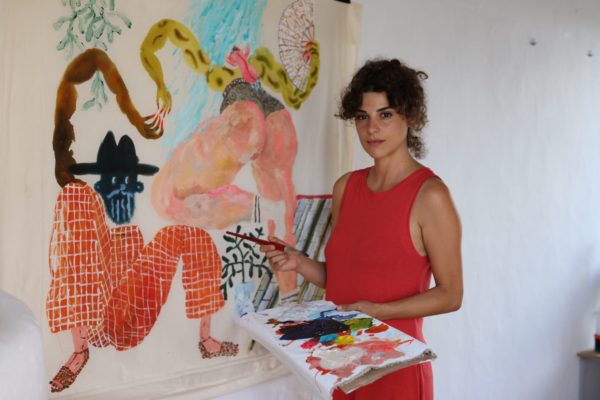
Bio
Fati Morri is the artistic name of Fátima Moreno, a graphic artist and illustrator born in Granada and with close ties to Barcelona and Lisbon.
She imbued art from an early age, her mother being a painter. She studied engraving at the Escuela de Arte de Granada and then completed a Master’s in contemporary graphic design in Galicia, which led her to work in advertising for several years, before quitting to devote herself entirely to illustration.
As an illustrator she has worked for clients such as Alpha Decay publishers, the newspaper El Mundo, the BAM festival and El Segell del Primavera Sound, among others.
Project:
Sabelo Mlangeni

Bio
Sabelo Mlangeni is a South African photographer who was born in 1980 in Driefontein, near Wakkerstroom, in Mpumalanga, and moved in 2001 to Johannesburg, where he joined the Photo Workshop market, graduating in 2004.
His sensitivity and ability to provoke emotion through his images have earned him a place in the world of photography. He has had solo exhibitions in various parts of South Africa, the US, New Zealand, the UK and Angola; and group exhibitions in Germany, Nigeria, Mali, France, Portugal, Holland and Mexico, which have addressed themes as diverse as apartheid, the invisibility of women, and sex.
Project:
Nihat Karatasli

Bio
Nihat Karatasli (1988-2021) is an interdisciplinary artist whose videos, animations, sculptures, performances and installations explore the interconnections between humans, nature and technology.
A lecturer, columnist and teacher, Karatasli is also co-founder of the Hüzün Archive, supported by Koç University (Istanbul). His work has featured in group exhibitions in Istanbul, Seoul and Los Angeles and he holds an MFA from the School of the Art Institute of Chicago.
He has participated in several film festivals, including the 7th Mammoth Lakes Film Festival in California, Soy Meta in Shanghai, 37th Kasseler Film Festival and Stand Firm, Stand Here @ Ohklahomo, Chicago.
Project:
Martine Feipel & Jean Bechameil
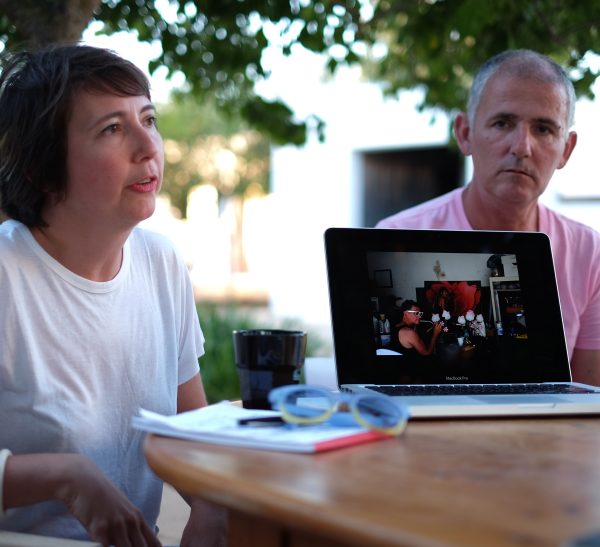
Bio
Martine Feipel & Jean Bechameil construct and deconstruct spaces. Extensive training and experience afford them an absolute mastery of volume with which to recreate a universe that seems completely illogical at first sight.
Martine Feipel studied visual arts at the Marc Bloch University in Strasbourg, the University of the Arts in Berlin and at Central St. Martins College of Art & Design in London, where she obtained her MA in Fine Art. Jean Bechameil has worked since 1990 as a freelance sculptor. He has produced many of Lars von Trier’s play and film sets, including Antichrist, Manderlay and Dogville.
Based in Luxembourg, the couple have collaborated together since 2008.
Project:
Sofia Eliza Bouratsis
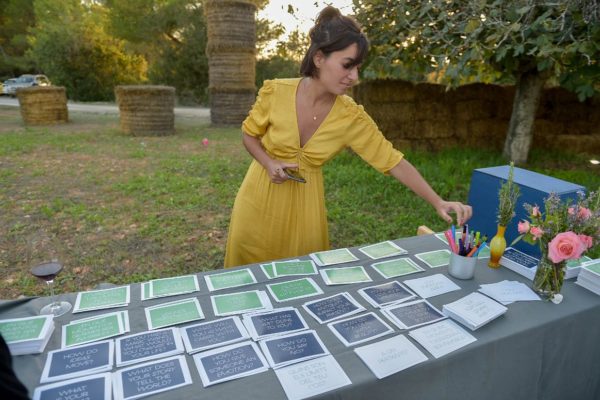
Bio
Sofia Eliza Bouratsis is passionate about the contemporary art world, in which she has immersed herself through research, writing and curating. One research theme she often returns to is the dichotomy between the human and non-human body; but she is also interested in contemporary images and new technologies, as well as the exciting discourse around public, urban and ecological space, especially from an architectural perspective.
Proyecto
Project
Sofia Eliza Bouratsis’s project draws inspiration from the conversations the Greek artist held with the other artists participating in the residency. They form the basis of a series of postcards displaying questions, in a perfect fusion of text and exposé of ideas in movement.
Ana Laura Aláez

Bio
Winner of the Basque Government's Gure Artea Award in 2013, in recognition of her artistic career and contribution to contemporary art. Alongside her visual work, Aláez has also engaged in activities such as space design and writing. Since 2000 (coinciding with her project Dance & Disco at Espacio 1 of the Reina Sofía Museum), she is also collaborating with other electronic music creators. She has extensive teaching experience through courses, lectures, and workshops. Ana Laura lives and works in Palma de Mallorca.
Project:
